This is Elliott’s hierarchy, the Basic Building Block. No matter how large your organization, it will be populated by this Basic Business Unit.
Have you ever been to the Grand Canyon, or seen a picture of the Grand Canyon? As you peer over the canyon wall, if you are a geologist, what do you call the structure of rock across the canyon? Think back to your high school days in geology class, it will soon come to you.
The geologic rock formation is known as Strata, or a single layer of rock, Stratum.
Question: As you observe the layers of rock, what happens to any single layer where the rock is weak?
Answer: The layer compresses and crumbles at the point of weakness.
Question: And at that point of weakness, what happens to the layers above?
Answer: They begin to compress and crumble at exactly that same point?
And the same thing happens in your organization. Wherever there is weakness (lack of capability or incompetence) in any layer, you will notice compression and crumbling at that point. You will also observe compression and crumbling in all the layers immediately above. Every layer in the organization must be healthy and robust. No layer is more important than any other layer.
Stratum I
So, what is the role in Stratum I? These are the people in your organization who do production. Get your hands dirty production. Assembling your products, delivering your services. You might think this as basic and not worth mentioning, but this is precisely what distinguishes the Stratum I role from the rest of the organization.
Stratum II
Stratum II makes sure that production gets done. We call these people Supervisors, whose role it is, to make sure production gets done. If you think about your organization, these people quickly come to mind. While they may have some other responsibilities, their primary role is to make sure that production gets done.
Stratum III
What is the role in Stratum III? Stratum III creates your internal system. Stratum III creates the system, monitors the system, tweaks the system, overhauls the system. Stratum III makes the decisions for both efficiency and effectiveness.
To understand these roles more clearly, all we have to do is look at the tools being used in each Stratum.
Stratum I – Tools
What are the tools used by Stratum I? Well, those tools turn out to be real tools, machinery, equipment, forklifts and CNC machines. If it is a clerical position, the likely tool is a computer. Production tools for production work.
Stratum II – Tools
What are the tools used by Stratum II? The tools are completely different. The role for Stratum II is to make sure production gets done. The tools for Stratum II are
- Schedules
- Checklists
- Meetings
The tools are different because the role is different.
Stratum III – Tools
If the role at Stratum III is to create the system, what are the tools necessary to capture the elements and determine the sequence of steps in the system?
- Flow charts – to illustrate the flow of work through the system.
- Schematics – to illustrate the relationships between the steps in the system.
- Sequence – to determine the critical path of the system, the concurrent steps of the system, the timing and synchronization of the steps.
- Planning – to document the action steps, make assignments and identify accountabilities in the system.
These are some of the tools necessary for a Manager to create, monitor and improve the internal systems of the company.
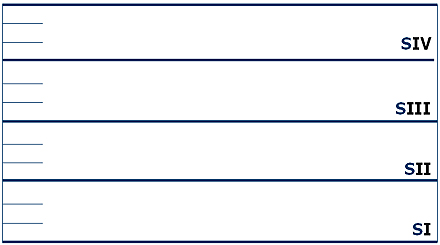
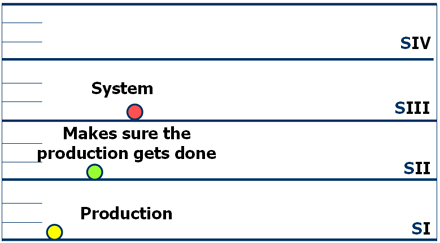
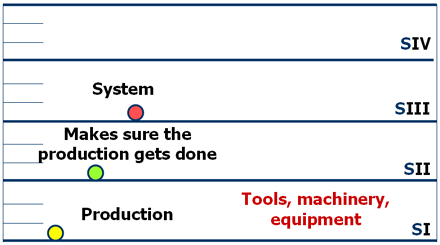
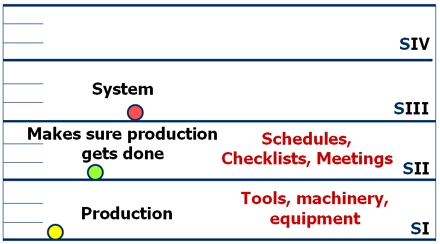
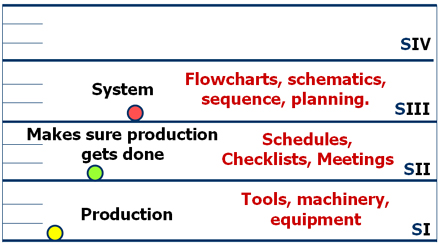
Pingback: Roles in a Service Environment | Management Skills Blog